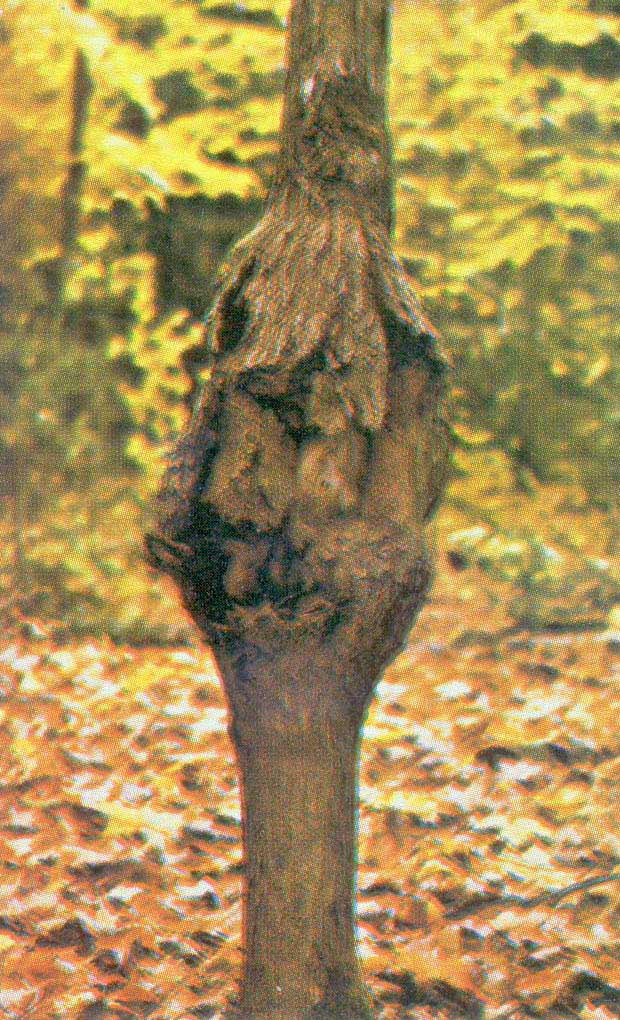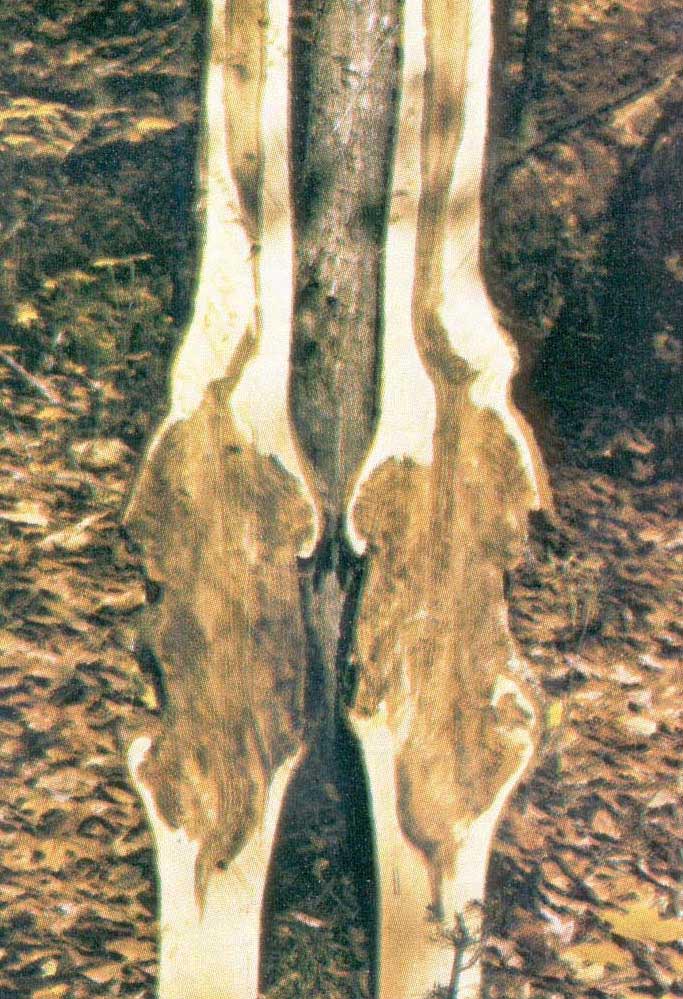
| Home |
| Tutorial |
| Photo Gallery |
| List of Defects |
| Links |
| Bark Distortion |
| Bird Peck |
| Bumps |
| Burls |
| Butt Scars |
| Butt Swells |
| Cankers |
| Conks |
| Epicormic Branches |
| Flanges |
| Flutes |
| Forks |
| Galls |
| Holes |
| Knots |
| Lesions |
| Limbs |
| Ring Shake |
| Rot |
| Seams |
| Soak |
| Splits |
| Wounds |
Stem cankers seriously damage the trees of 126 commerical hardwood species; this damage results in excessive losses annually in both product volume and value. In 1958, volume losses from cankers on hardwood trees were conservatively estimated at 186 million board feed. Cankers are found on hardwood trees from the Atlantic to the Pacific Coast and from Canada to Mexico. Sixteen fungi cause the greatest proportion of the damage. Nextria spp. causes the most damage, affecting trees of 36 hardwood species, including 4 leading West Coast hardwoods, northern hardwood species of the Lake States, and hickory, oak, yellow-poplar, and tupelo of the Southeastern and Gulf States. Cankers are most common on black walnut, aspen, birch, hickory, maple, and red and water oak.
Significance: Interior rot or exterior rot is associated with nearly all cankers. Such rot commonly extends downward and upward from the cankered area for varying distances. In the few instances where there is no rot, bark pockets, insect damage (from wood borers), or stain is usually present-either singly or in any combination. They also may be found with either form of rot. In good bucking practice, a canker and any massive rot is not included in the log.
In veneer logs, a canker is always a degrader. If an included canker with accompanying interior rot takes up more than a third of the log's diameter, the log is disregarded for veneer. If sap rot is present, the log receives no consideration for veneer.
In factory logs, a canker is always a degrader if it is included in the log. When a canker is left in the log and affects more than one face, the log is cut so that the cuttings can be taken on each side of it to produce at least a Grade 3 factory log.
In construction logs, a canker is such a severe degrader that it disqualifies a log otherwise suitable for construction material.
In standing trees, cankers constitute the largest group of stem deformations. The decay associated with cankers in most cases extends from 3 to 8 feet (.9 to 2.4 m) up and down the bole from the canker, depending on the causal fungus. The diameter of the decay can be estimated by taking an increment boring, with a Shigometer, or by sounding a tree with an ax.



